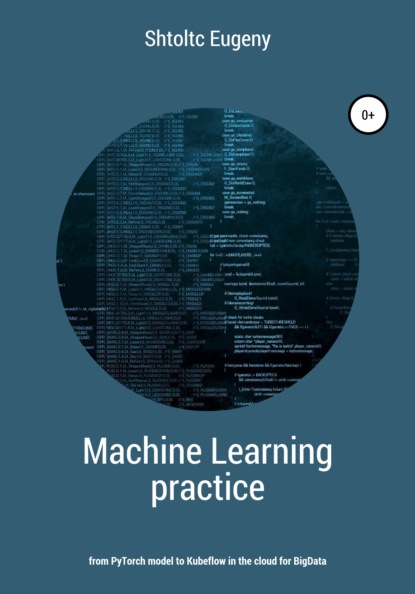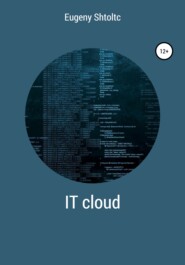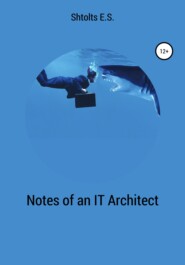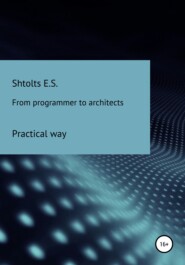По всем вопросам обращайтесь на: info@litportal.ru
(©) 2003-2024.
✖
Machine learning in practice – from PyTorch model to Kubeflow in the cloud for BigData
Настройки чтения
Размер шрифта
Высота строк
Поля
Not all combinations are successful, some only allow solving narrow problems. As the complexity increases, a smaller percentage of possible architectures are successful and bear their own names.
In general, there are networks that are fundamentally different in structure and principles:
* direct distribution networks
* convolutional neural networks
* recurrent neural networks
* autoencoder (classic, thin, variational, noise canceling)
* networks of trust ("deep belief")
* generative adversarial networks – opposition of two networks: generator and evaluator
* neural Turing machines – a neural network with a block of memory
* Kohonen neural networks – for unsupervised learning
* various architectures of circular neural networks: Hopfield neural network, Markov chain, Boltzmann machine
Let us consider in more detail the most commonly used, namely, feedforward, convolutional and recurrent networks:
Direct distribution networks:
* two entrances and one exit – Percetron (P)
* two inputs, two fully connected neurons with an output and one output – Feed Forward (FF) or Redial Basics Network (RBN)
* three inputs, two layers of four fully connected neurons and two Deep Feed Forward (DFF) outputs
* deep neural networks
* extreme propagation network – a network with random connections (neural echo network)
Convolutional neural networks:
* traditional convolutional neural networks (CNN) – image classification * unfolding neural networks – image generation by type * deep convolutional inverse graphic networks (DCEGC) – connecting convolutional and unrolling neural networks to transform or combine images
Recurrent neural networks:
* recurrent neural networks – networks with memory in neurons for sequence analysis, in which the sequence
matters such as text, sound and video
* Long Short Term Memory (LSTM) networks – the development of recurrent neural networks in which neurons can
classify data that are worth remembering into long-lived memory from those that are worth forgetting and delete information
from their memory
* deep residual networks – networks with connections between layers (similar in work to LSTM)
* recruited recute neurons (GRU)
Basics for writing networks.
Until 2015, scikit-learn was leading by a wide margin, which Caffe was catching up with, but with the release of TensorFlow, it immediately became the leader. Over time, only gaining a gap from two to three times by 2020, when there were more than 140 thousand projects on GitHub, and the closest competitor had just over 45 thousand. In 2020, Keras, scikit-learn, PyTorch (FaceBook), Caffe, MXNet, XGBoost, Fastai, Microsoft CNTK (CogNiive ToolKit), DarkNet and some other lesser known libraries are located in descending order. The most popular are the Pytorch and TenserFlow libraries. Pytorch is good for prototyping, learning and trying out new models. TenserFlow is popular in production environments and the low-level issue is addressed by Keras.
* FaceBook Pytorch is a good option for learning and prototyping due to the high level and support of various
environments, a dynamic graph, can give advantages in learning. Used by Twitter, Salesforce.
* Google TenserFlow – originally had a static solution graph, now dynamic is also supported. Used in
Gmail, Google Translate, Uber, Airbnb, Dropbox. To attract use in the Google cloud for it
Google TPU (Google Tensor Processing Unit) hardware processor is being implemented.
* Keras is a high-level tweak providing more abstraction for TensorFlow, Theano
or CNTK. A good option for learning. For example, he
allows you not to specify the dimension of layers, calculating it yourself, allowing the developer to focus on the layers
architecture. Usually used on top of TenserFlow. The code on it is maintained by Microsoft CNTK.
There are also more specialized frameworks:
* Apache MXNet (Amazon) and a high-level add-on for it Gluon. MXNet is a framework with an emphasis on
scaling, supports integration with Hadoop and Cassandra. Supported
C ++, Python, R, Julia, JavaScript, Scala, Go and Perl.
* Microsoft CNTK has integrations with Python, R, C # due to the fact that most of the code is written in C ++. That all sonova
written in C ++, this does not mean that CNTK will train the model in C ++, and TenserFlow in Python (which is slow),
since TenserFlow builds graphs and its execution is already carried out in C ++. Features CNTK
from Google TenserFlow and the fact that it was originally designed to run on Azure clusters with multiple graphical
processors, but now the situation is leveled and TenserFlow supports the cluster.
* Caffe2 is a framework for mobile environments.
* Sonnet – DeepMind add-on on top of TensorFlow for training super-deep neural networks.








